Abstract and Objectives
By experimenting, it was possible to address the three important objectives in this study. The first and second objectives were to determine the effects of changing the speed of the motor on the output current and voltage respectively. That was achieved by an upward and downward of the current and plotting the results on a graph with two curves, which showed the behavior of the output voltage and current. The third objective was to determine the effects of the load factor on the current and the resulting voltage to determine the behavior of the motor about the output voltage.
Introduction
An electric motor is made of a magnetic circuit and pins attached to the motor and high flux density magnetic poles. When the components rotate within the magnetic field, the process converts the rotary motion into electrical energy (Nitsche and Paulus 1). The moor operates on the principles of electromagnetic induction, which were independently discovered by Michael Faraday in 1831 and Joseph Henry in 1832 (Ozturk, Alexander, and Toliyat 3). That is by the principle of conservation of energy and the laws of electromagnetic induction, which states that energy is neither created nor destroyed. The amount of electrical energy generated due to the motion depends on the speed at which the magnetic field is cut in the process of transforming mechanical energy into electrical energy (Hagiwara, Nishimura, and Akagi 4). According to Damodharan and Vasudevan, Lenz’s laws of electromagnetic induction show that the rate of change of the magnetic flux density is directly proportional to the induced e.m.f (2). The law indicates that the motion that causes the current in a wire acts in the opposite direction to the effect causing the current.
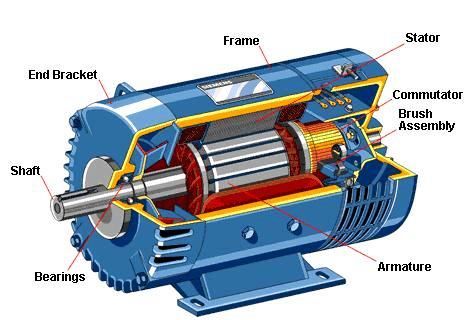
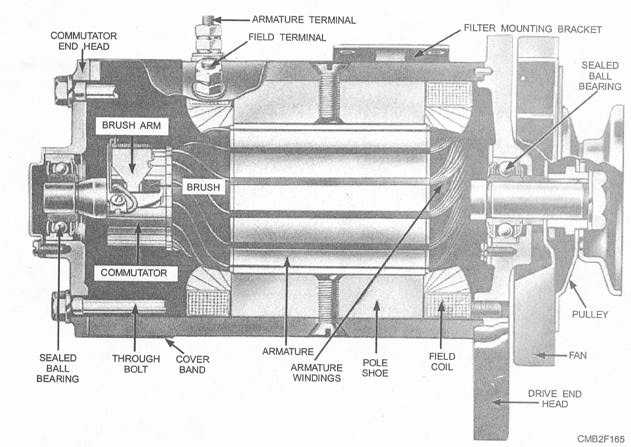
In this experiment, electrical energy was supplied to rotate the DC motor and observations were made on the effects of the current on the output voltage (Damodharan and Vasudevan 2). In practice, different motors or types of magnetic systems behave differently. However, the motor, which is made of a coil wound over a magnetic material that moves by cutting the magnetic field, creates an electric current to flow in the circuit (Hinago and Koizumi 3). The speed of the rotor was a key factor in determining the intensity of the current and the output voltage. Despite that, it was possible to adjust the speed of the motor by applying slight pressure on the switch for some minutes to allow changes in the speed of the motor to happen. It was important to adjust the speed of the motor using the 555IC based PWM (Pulse Width Modulation) to study its effects on the output voltage.
Equipment
The following tools were used in the study:
- Voltmeters
- Ammeter
- Copper wires
- DC motor
- Switch
- Copper clips

The DC motor has the following components
- Yoke
- Pole of motor
- Field winding
- Brushes or motors
- Bearing
- Speed controller using NE555 timer IC
- Vero board for assembling the circuit
- 12V DC for powering the IC
Set-up
In the first instance, varying the speed of the motor changed the output current and voltage accordingly. The actual speed of the motor was attained by removing the load on it (Bose 2). However, the maximum speed was as a result of the inductance of the coil and other components of the motor.
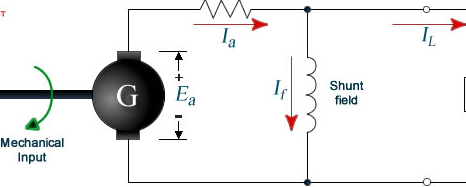
The magnetization curve shown below illustrates the effects of changing the voltage due the variations in the current generated that responds to the changes in speed of the motor. An excited state was achieved by using the shunt generator in a self-excited state. Here, by increasing the rotational speed of the motor, the output voltage was increased accordingly.
Procedure
In the second instance, the button was continuously pressed resulting in a cycle of 2ms, which, when compared with the theoretical cycle of 10ms, showed a terminal voltage of 7V against the expected voltage of 9V. Variations in input current caused significant changes in the speed of the motor.
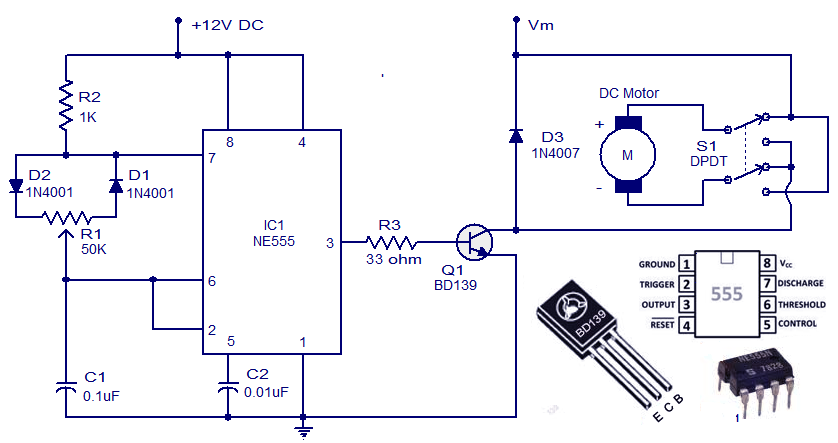
Results
The experiment was done by pressing the witch for a long time and the results showed that 80% of the duty cycle was achieved. On the other hand, when the button was pressed in less time as compared with the first instance, the terminal voltage was noted to decrease further and the result was a decrease in the motor speed. The graph below illustrates the effects of speed on the voltage with no load applied to the system and the table shows the values that were obtained for different load conditions.
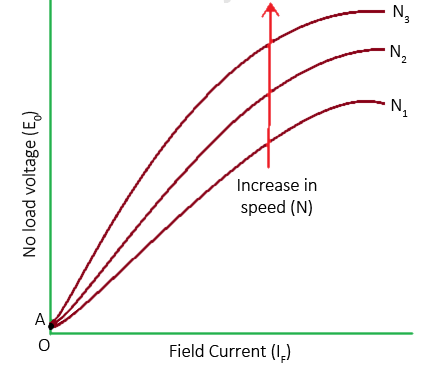
The crease in speed continued until a certain voltage was reached when the motor could not rotate any further as shown in the graph above. It is important to note that there was no load applied on the circuit.
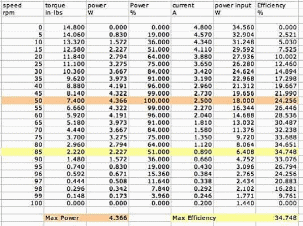
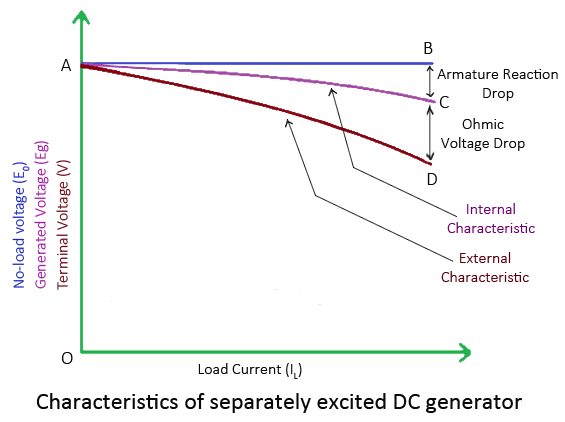
The above graph illustrates the effects of voltage due to the generated current. The terminal voltage is on the vertical axis and the load current on the horizontal axis. External, internal, voltage drops and armature characteristics are shown on the graph. If the motor is allowed to run for some time, the armature reaction reduces significantly, which makes a voltage drop to occur. However, a constant value is attained after a certain voltage is reached.
Load factor effects
In the third case, the current was changed slowly and the effects on the voltage were observed in the presence of a load factor. The introduction of the load factor has a significant effect on the output voltage.
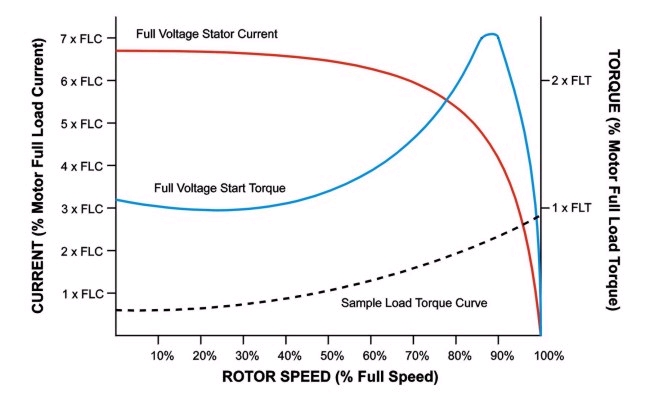
The curve shown above illustrates the effect of introducing load on the motor. Effects of the full voltage on the stator motor and torque output are shown in the first and the second curves.
Observations
By increasing the speed of the motor, the output voltage could grow to a new value. However, a speed limit was achieved beyond which the speed and the output voltage could not be changed upwards.
However, the magnetic field was noted to affect the speed of the motor. The DC generator is a strong load factor that affects the operating efficiency of the motor.
Analysis
It is possible to note that power output from the motor depends on various factors such as the inductance of various components such as armature and the magnetic field. In addition, the load condition affects the voltage and current output so that when the load is increased, the output voltage decreases. Besides, the motor cannot achieve the theoretical speed because of the effects of the internal and external voltages.
Conclusion
Raising the speed increases the output voltage to its maximum beyond which no further voltage increase is experienced even when the speed increases further.
Works Cited
Bose, Bimal K. Power electronics and motor drives: advances and trends. Academic press, 2010.
Damodharan, P., and Krishna Vasudevan. “Sensorless brushless DC motor drive based on the zero-crossing detection of back electromotive force (EMF) from the line voltage difference.” Energy Conversion, IEEE Transactions on 25.3 (2010): 661-668.
Hagiwara, Makoto, Kazutoshi Nishimura, and Hirofumi Akagi. “A medium-voltage motor drive with a modular multilevel PWM inverter.” Power Electronics, IEEE Transactions on 25.7 (2010): 1786-1799.
Hinago, Youhei, and Hirotaka Koizumi. “A single-phase multilevel inverter using switched series/parallel dc voltage sources.” Industrial Electronics, IEEE Transactions on 57.8 (2010): 2643-2650.
Nitsche, Michael A., and Walter Paulus. “Sustained excitability elevations induced by transcranial DC motor cortex stimulation in humans.” Neurology 57.10 (2001): 1899-1901.
Ozturk, Salih Baris, William C. Alexander, and Hamid Toliyat. “Direct torque control of four-switch brushless DC motor with non-sinusoidal back EMF.” Power Electronics, IEEE Transactions on 25.2 (2010): 263-271.